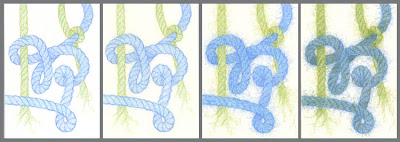Behind the scenes of the film's biggest beasts.
The post Tips & Tricks for Creating Fantastic Beasts From the Artists of ‘Fantastic Beasts and Where to Find Them’ appeared first on Cartoon Brew.
Add a Comment
Behind the scenes of the film's biggest beasts.
The post Tips & Tricks for Creating Fantastic Beasts From the Artists of ‘Fantastic Beasts and Where to Find Them’ appeared first on Cartoon Brew.
Add a Comment
Animal Logic explains how they created expressive, cartoony animation for their short without squash and stretch and other animation principles.
The post Animal Logic Does Kung Fu Fighting, In LEGO appeared first on Cartoon Brew.
Add a Comment
Adelaide, Australia-based Rising Sun Pictures made the vfx for the most talked-about shot in the new "X-Men" film.
The post How They Made That ‘X-Men: Apocalypse’ Scene Everyone Is Talking About appeared first on Cartoon Brew.
Add a Comment
Cartoon Brew delves into the animation challenges of Disney's latest blockbuster.
The post Not Your Grandpa’s Talking Animals: How Animators Kept ‘The Jungle Book’ Real appeared first on Cartoon Brew.
Add a CommentSimon Nicholson writes for Nick Jr. including such shows as Tickety Tock, Bob the Builder, and Zack and Quack, as well as for BBC children’s programming.
Add a CommentA rickety scientific expedition ventures down the Amazon River to a dark lagoon, in search of a mythic Creature! But the Creature, it seems, has a less than mythic agenda!
Add a CommentSimon Nicholson, author of YOUNG HOUDINI: THE MAGICIAN'S FIRE, discusses how he came up with the idea for his thrilling new series.
Add a Comment


Tonto participates in a séance every Halloween, on the anniversary of the death of the great magician and escape artist, Harry Houdini. Never before had anybody successfully communicated with his spirit. But this year I believe the Worlds Greatest Mystifier tapped me on the shoulder, as a disconcerting updraft swept across the table, and spoke these words into my ear, “About that Underwater Handcuff Escape—the key was hidden in my rectum.” I was rather disappointed, though, when the lights came back on, because what I really wanted to see was some of that cool ectoplasm all over the place, yet there was none.
I don’t write “informational” books although my books certainly contain lots of information. In fact, I dislike the label. In this day and age, with easy access to specific information on the internet on an “as needed” basis, information is the least important component of my work.
Traditionally, the main reason kids read informational books is that they have to do a homework assignment. I want to write books that kids pick up because they are intrigued and can’t put down because their interest is sustained. When I write, I must continually bear in mind who I’m writing for and what other reasons besides a school assignment they might want to know about something. This means that there have to be some big ideas in a book to form a conceptual framework for facts, which are merely decoration for these ideas.
I like to think of my books as “conceptual.” Every book has some underlying theme or thesis that builds the kind of comprehension that makes facts memorable. Let me give you some examples:
The “Imagine Living Here Series” consists of seven books dealing with life in a part of the world that can each be described with one word. This Place is Cold, for example, is about Alaska. The narrative develops around a series of questions my reader might ask. How cold is it? Cold enough to freeze your eyelashes so they break. Why is it cold? The answer brings up a discussion of latitude… which also discusses the ratio of daylight to nighttime. How do animals and plants adapt to this climate? How do people adapt? What kind of culture occurs? How does this show up in their lifestyles and their art? No information is gratuitous—every fact is connected to a big idea.
My “Where’s the Science Here?” series has four books on subjects of intrinsic interest to kids: sneakers, fireworks, junk food, and show business. Sneakers lets me discuss the biomechanics of walking and running, the structure of the foot, the comparison of human locomotion to that of fast animals like the cheetah and the pronghorn antelope, and the engineering of athletic footwear to enhance performance and protect the foot. Fireworks explores the chemistry of fire and the physics of rocketry. Junk Food discusses the gas laws behind popcorn, the packaging of potato chips, the sugar content of regular soda vs. diet soda, the melting point of chocolate and ends with a discussion of the nutritional content of the foods. On Stage describes the theatrical special effects behind fake snow, rain, fire, blood, breaking glass, and flying in the context of the science used to produce them. Simple activities as sidebars illuminate the concepts and give the reader real experience of the science in the books.
The “Science Play” series has four titles. Each explores a very common event in very young child’s life from the point of view of a scientist. This kind of paradigm shift—revisiting the ultra-familiar as a scientist might—lends itself to a series of activities that ultimately lead to a non-intuitive conclusion. I have written an extensive analysis of why I wrote this series in the November 2005 Book Links, (which you can find on my website: here).
I’ve recently had the fun of writing Harry Houdini: A Photographic Story of a Life for DK Books. Telling the story of Harry’s life chronologically like so many other people have done did not appeal to me. After absorbing their work by reading dozens of books it occurred to me that there were recurrent themes running through Houdini’s life as a multifaceted person and I used these themes to organize my book: Harry as a young man, a showman, a self-promoter, a death defier, a scholar and author, a family man, and as a champion of science against spiritualists.
In fiction, characters and plot make up the conceptual framework that drives the story. In nonfiction, facts are not enough. More than ever before, the nonfiction author must find points of view for a narration. The reasoning throughout the work must be inductive—going from the specific to the general (doing the opposite, making general statements and illustrating them with examples is boring) and the specifics must have a compelling fascination for kids to grab their attention. Once you have their attention, the author should be a Pied Piper taking them where she wants them to go. Now that’s a challenge!
Yesterday was a good day. I sold some art, I sold some knitting (thanks to both of you!), I heard from an old friend (Linda Medley ~ check out her Castle Waiting, its AWESOME) and I made a great cacciatore for dinner. It was a nice way to start the new year.
Here is today's yarn piece.
Its all Polychromos.
Colleen asked about the last one : "How do you design your pictures? Do you make them up or do you get out some yarn and play around with it until you get a pleasing composition?"
So I thought I'd do a little demo.
I don't get yarn out and play with it. I just make up a design out of my head.
I start like this: (click the picture and it should come up bigger in a new window.)
1. I drew out a design, lightly.
2. I did a layer of ultramarine and moss green to establish color and some shadows.
3. I did a layer of cobalt turquoise over both yarns.
4. I added the "plys" to the yarn.
5. This layer is so subtle. I added a layer of ivory over the entire thing, background too. It kind of ties everything together, and makes the surface of the whole piece the same.
6. I bumped up the color and added the fuzz and made it 'yarn'.
7. I added a layer of chrome green because it felt too light. This gave it a little more oomph. And there you have it.


Thanks for the step by step pictures Paula! Its nice to see your process and I'm surprised that you don't lay out the yarn. I like these colors.
Thanks for the tutorial.
Thank you for the pictures and explanation.=) No matter how much you think you know by looking at someone's art, you always learn things by seeing the process.
I like the "add the fuzz" step :)